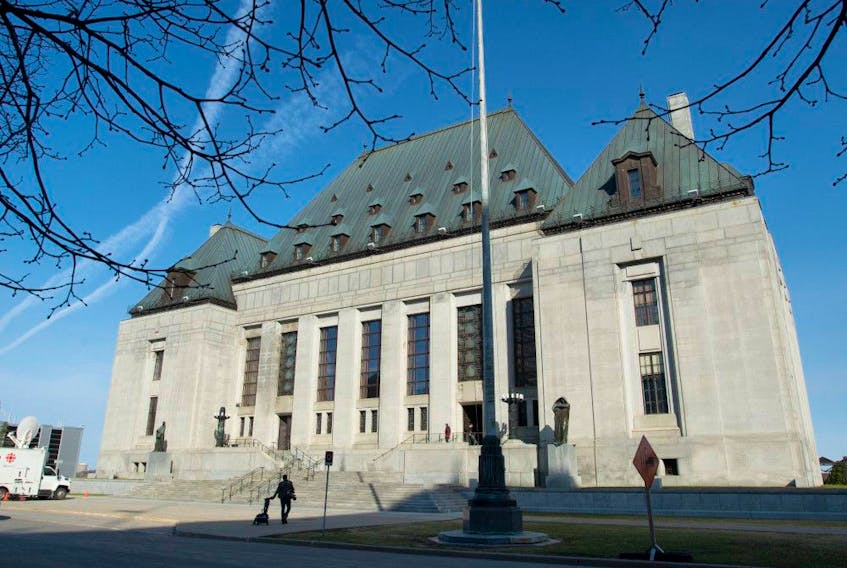On Wednesday the Supreme Court, issuing an immediate decision from the bench in a criminal appeal, upheld the Liberal government’s abolition of peremptory challenges to jurors. The court’s reasons have not yet been published, but the woolly details of the legal argument are not what’s interesting here — even to me. The interesting thing is the quiet, almost en-passant way in which the issue has been settled.
The government wiped out peremptory challenges — the right of the defence or the Crown to excuse a few jurors without any explanation during the selection process — as part of its package of criminal justice reforms in Bill C-75, although the word “reforms” will not be used by most defence lawyers without a touch of bitter irony.
Canada’s defence bar mostly despises this move, adopted as a knee-jerk reaction after a Saskatchewan farmer was acquitted of second-degree murder for the shooting of a Cree youth, Colten Boushie. The defence in that case used its peremptory challenges to dismiss jurors who appeared to be Aboriginal. This was widely seen as confounding the ideal of jury representativeness, but no Indigenous person was in danger of being bunged up in prison for decades as a consequence of that trial. Even as a reactionary political response to the death of Boushie, the eradication of peremptory challenges wasn’t particularly logical.
The introduction of the law, however, immediately raised a clamour among defence lawyers, who pointed out that they use peremptory challenges often to protect visible-minority suspects by knocking out potential jurors, and doing so precisely on the basis of guesswork about their appearance. The goal of a defence lawyer under the old regime wasn’t to obtain a “representative” jury, but to select jurors who would have more sympathy for the client. This might, and sometimes did, involve bouncing cranky-looking seniors, or males, or people in certain professions, or Norwegians, or anybody at all depending on circumstances.
The case disposed of by the Supreme Court this week involved written interventions by Black, South Asian, and Muslim lawyers’ groups as well as civil liberties think tanks. Clearly the C-75 “reform” was, at a minimum, controversial. (While researching the column I found a Law Times article whose headline claims, Lawyers Wrestle With Conflicting Views on Peremptory Challenges, but the actual text establishes the existence of a pretty clear consensus within the working defence bar.) Racial issues are at the top of everyone’s agenda right now, but the reform bill was pushed through with the abolition of peremptory challenges intact, even though one would expect the shrieks of defence lawyers to carry some weight with a Liberal government.
The Supreme Court faced the necessity of giving a final “yes” or “no” to C-75’s provisions; lower courts were handling the issue chaotically, and, as so often happens, nobody could really know what the law actually was until the gang in ermine had given it the green light. The tradition of the peremptory challenge has a statutory basis only. It could be abolished by fiat because the right of a defendant to use these challenges isn’t considered one of the fundamental principles of justice under the charter, and isn’t one of the enumerated due-process rights in its Sec. 11.
It is not easy to fault the court for that. A bad law may still be constitutional, and the constitutional argument against C-75 is pretty subtle. Getting rid of peremptory challenges makes the judge the final arbiter of a jury’s makeup, and in a way he was not before. One would have to have convinced the judges that this re-balancing was a profound change to the innermost nature of a jury trial — profound enough to run afoul of Sec. 11.
That’s a tough sell. Our common idea of fair criminal justice probably doesn’t positively necessitate the existence of peremptory challenges: we can do without them and call ourselves free. (Britain dumped them decades ago.) But nobody really knows whether this change will lead to more diverse or more effective juries, and the practitioners who know most about it seem to be in extreme and near-universal doubt.
Meanwhile, if you’re an ordinary citizen who is dissatisfied with some aspect of how life and property is protected in Canada, you have seen that change, even change that compromises the individual’s ability to mount a defence, is possible. It can pass through the courts in a relative trice, a matter of 15 months. But you had better make sure you vote Liberal, because if a Conservative government had pulled this kind of thing, it certainly wouldn’t have gone down so smoothly outside of lawyers’ trade journals , house newsletters and social-media conversations.
National Post
Twitter.com/colbycosh
Copyright Postmedia Network Inc., 2020









